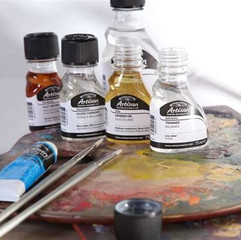STEM + Art = STEAM: A New Approach to Learning
What does art have to do with science? And what does science have to do with art?
Although the two may seem like completely opposite fields, both art and science involve exploration and creativity, and both complement and evolve alongside the other. To quote Einstein, “The most beautiful thing we can experience is the mysterious. It is the source of all true art and all science. So the unknown, the mysterious, is where art and science meet.”
Often, when we think about STEM subjects, otherwise known as Science, Technology, Engineering, and Mathematics, we may think of complicated formulas, datasets full of numbers, and scientific figures and charts. Working in science may give the impression that there is no room for error and that there can “only be one right answer,” but most of what makes up science is just problem-solving. Asking questions, forming hypotheses, designing experiments, and interpreting data all take creativity. Because some of the work in STEM may be built upon concrete theories and prior studies, it takes imaginative thinking to take those previous ideas and develop new projects and hypotheses.
Artists also use a great deal of scientific thinking in creating their works. The chemistry of certain mediums, like oil paint, is crucial to know as consistency and layering methods can change or even ruin a work of art. Illustrators often refer to anatomical figures when drawing and graphic designers may utilize geometry to create pieces. Photographers must understand the physical nature of light and, if shooting with film, must be familiar with the solutions used to develop it. Artists, such as Mozart, have incorporated the logarithmic Fibonacci sequence into the composition of their works, Leonardo da Vinci was known to dissect corpses to further study the human anatomy, and John Audubon illustrated a multitude of bird species across North America which aided in classification and conservation efforts.
The advancement in technology further added to the various ways that art and science could merge. The Apple iPhone’s user-interface and distinctive design couples engineering with graphic design, museum and public installations grew to become more interactive with the help of audio-visual technology, and ever-changing computer programs and softwares proved to be incredibly useful tools in creating artworks and media.
STEAM education, an acronym that stands for Science, Technology, Engineering, Arts, and Math, is a learning approach that integrates the practices and principles of STEM’s experiential learning methods with arts practices and elements. This movement was championed by John Maeda, the former president of the Rhode Island School of Design. STEAM education emphasizes the importance of discovery and creative thinking while allowing students to develop critical and visual thinking skills. Integrating STEAM into classrooms helps build an education plan that encourages and fosters creativity in students, and helps them practice problem solving in a variety of subjects and utilize today’s technology while doing so. This can look anything like incorporating visual arts, like infographics and illustrations, into lesson plans and homework to using tools such as laptops and tablets as a learning aid. Any teacher can implement STEAM education into their classrooms or lesson plans, and can attend conferences or lectures to better understand this constantly-evolving teaching discipline. Many other resources are also available through the Institute for Arts Integration and STEAM.
Art and science go hand-in-hand with each other and the integration of both can not only create an inclusive, interdisciplinary learning environment, but can also help us better study and understand our world.
















Comments